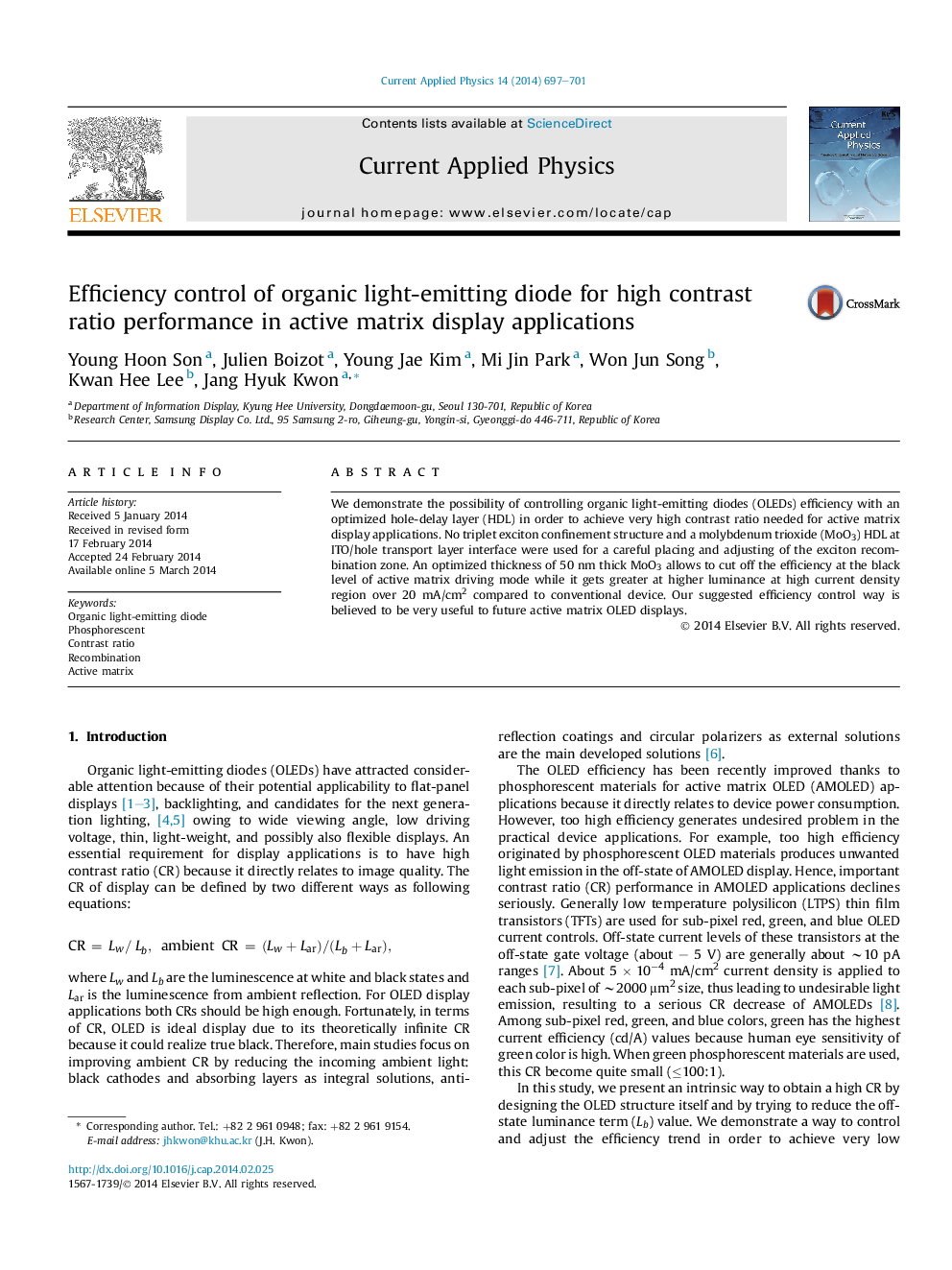| Article ID | Journal | Published Year | Pages | File Type |
|---|---|---|---|---|
| 1786333 | Current Applied Physics | 2014 | 5 Pages |
•Triplet exciton quenching structure could restrict undesirable light emission.•Exciton recombination zone shifts far from quenching site with increasing voltage.•Molybdenum trioxide was used as a hole delay layer.•Theoretically infinite contrast ratio was achieved.
We demonstrate the possibility of controlling organic light-emitting diodes (OLEDs) efficiency with an optimized hole-delay layer (HDL) in order to achieve very high contrast ratio needed for active matrix display applications. No triplet exciton confinement structure and a molybdenum trioxide (MoO3) HDL at ITO/hole transport layer interface were used for a careful placing and adjusting of the exciton recombination zone. An optimized thickness of 50 nm thick MoO3 allows to cut off the efficiency at the black level of active matrix driving mode while it gets greater at higher luminance at high current density region over 20 mA/cm2 compared to conventional device. Our suggested efficiency control way is believed to be very useful to future active matrix OLED displays.
Graphical abstractFigure optionsDownload full-size imageDownload as PowerPoint slide
